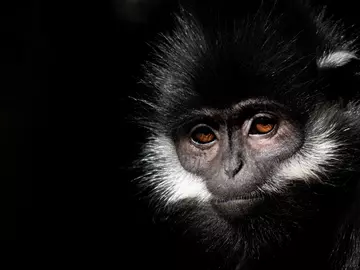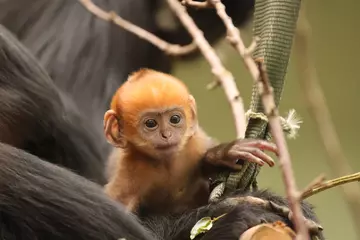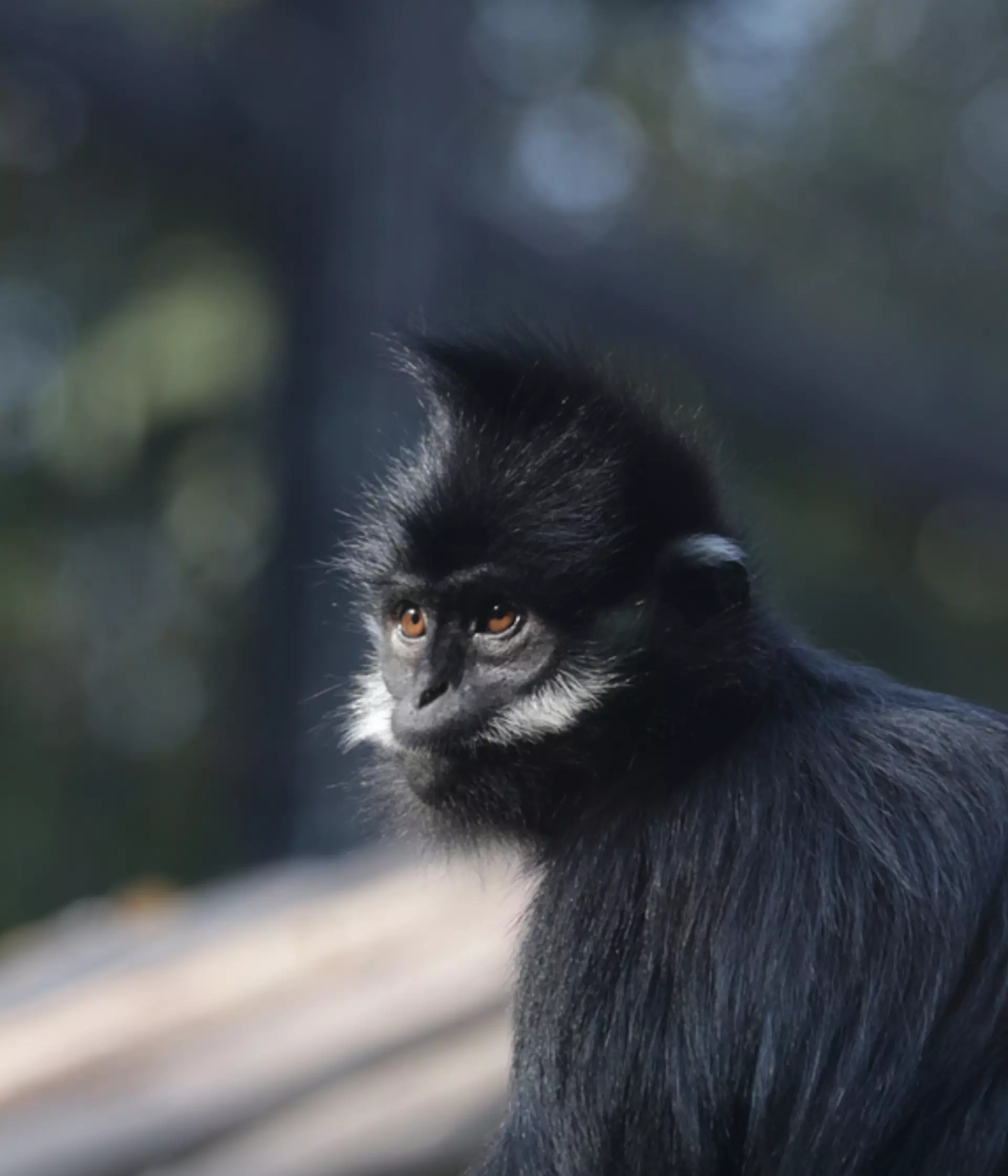
Meet our langurs
Our troop has recently welcomed baby "Jinfo", inspired by Mount Jinfo in China where they live out in the wild. Their name also symbolizes the Golden Buddha, after their bright orange colour.

François’s Langur facts
- Baby langurs are born bright orange, which fades as they get older. It's not yet fully understood why they have are born with this colour, but it potentially helps adults keep an eye on their infants and help encourage care giving and attention.
- François’s langurs have double chambered stomach similar to a cow, which helps them digest tough leaf fibers.
- These langurs live in a matriarchal society with females leading the group.

François’s Langur habitat
François’s langurs typically live along limestone cliffs up to 600 metres high, and retreat into caves for safety when they rest and sleep.
Francois' Langur threats
François’s langurs were once widespread across northern Viet Nam and southern China, but hunting and habitat loss has significantly reduced the population. In Viet Nam there are now just around 200 individuals left, while in China populations have dropped from over 7000 to now 1600.

Black ape wine
Hunting for "black ape wine" is their biggest threat in the wild, which is specifically created from Francois' Langurs. The illegal wildlife trade for "black ape wine" even leads to langurs being smuggled into Viet Nam, as it's wrongly believed to have medicinal properties, supposedly helping with fatigue.
Habitat loss caused by agricultural development for crops like rice paddies and maize are also a problem in China, and the creation of new livestock farms. This habitat loss makes them more vulnerable to hunting and fragments populations, increasing the risk of inbreeding.
Animals at Monkey Forest
Sulawesi crested macaque
Sulawesi crested macaques might not look like a monkey, but they actually have a vestigial tail that's just 2cm long.
Anoa
A dwarf buffalo, anoas are the smallest of all cattle species and our scientists have been working to protect them.
